About the InteriVision Summit
Located at Automotive Interiors Expo North America in Novi, Michigan, InteriVision Summit will serve as a platform for industry professionals, researchers, designers, engineers, and enthusiasts to come together and discuss the evolving landscape of automotive interior design and technology.
Rapidly evolving Safety Standards, Recyclability End-of-life Regulations, Connected Car & Autonomous Vehicle Regulations, Noise Regulations and Accessibility Standards, all make the world of Automotive spaces very dynamic and exciting.
Overall, policies and regulations affecting automotive interiors reflect broader societal concerns related to safety, environmental sustainability, technological advancement, and consumer protection. Automakers must navigate these regulations while striving to innovate and meet evolving customer expectations for interior comfort, convenience, and functionality.
The conference is free to attend but seats are limited and registration is required.
InteriVision Summit — Agenda
Day 2: Wednesday, October 23
InteriVision Summit
Moderator
Harsha Ravi
Senior interior designer
independent consultant
USA
Senior interior designer
independent consultant
USA
10am
What is safe in our future mobility world?
 David Muyres
David MuyresMobility futurist, chief commercial officer
Streetscope
USA
10.20am
Innovate for intuitive automotive interiors user experience
 Patrick Nebout
Patrick NeboutCTO
Yanfeng Technology
Germany
10.40am
Why do we design? Looking at the cultural aspects of creativity, in service of the end user
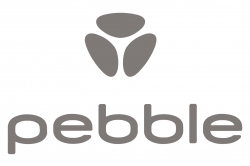 Page Beermann
Page BeermannHead of design
Pebble Mobility
USA
The presentation will cover innovative material usage, human-centric design philosophy and integrating smart technology with aesthetic appeal.
What the audience will learn
- The anthropology of creativity
- The psychology of form
- The role of the artist / creative in society
11am
Silicone-organic hybrid materials for unlocking design creativity
 Binbin Luo
Binbin LuoTechnical service and development scientist for silicone elastomers
Dow Performance Silicones
USA
 Quin McNamara
Quin McNamaraMarketing manager, North America
Dow Performance Silicones
USA
LuxSense silicone leather is the first synthetic leather (PU, PVC or silicone) that competes with natural leather on performance and exceeds it on sustainability. A multi-layer composite, LuxSense is designed to unlock design creativity and can be used on existing processing equipment. Several technical challenges were overcome using fundamental science to understand the underlying mechanisms and create a comprehensive yet elegant solution via chemistry. Key to this are silicone-organic hybrid materials that combine the advantages of silicones (aesthetics, flame, stain, chemical and UV resistance, durability) with those of organics (outstanding abrasion resistance) in a cost-effective, sustainable (lower VOC, free of plasticizer, DMF and harmful solvents) system. As a result, LuxSense has become the world’s first silicone luxury leather approved and commercialized in automotive interiors. It meets automotive interior specifications, including car seating applications, and exhibits the unique features of 4S: sense of sight, smell, sensation and sustainability.
What the audience will learn
- LuxSense™ has become the world’s first silicone luxury leather approved and commercialized in automotive interiors
- It has aesthetics, flame&stain&chemical&UV resistance, durability, and sustainability (lower VOC, free of plasticizer, DMF, or harmful solvents)
- It exhibits the unique features of 4S: sense of sight, smell, sensation, and sustainability
11.20am - 11.55am
Break
11.55am
The hidden chaos of creative genius
Harsha Ravi
Senior interior designer
independent consultant
USA
Senior interior designer
independent consultant
USA
Designers are a curious and sensitive breed, naturally attuned to the spaces around them. They are wired to seek dissonance – those moments when things don't function well – and craft compelling, intuitive and elegant product solutions that feel warm and welcoming. Yet the internal chaos that shapes the designer's artistic method is often unseen and receives little appreciation. This talk unravels their complex experience, examines its idiosyncrasies and explores what it can teach us about unlocking genius in our professional practice.
12.15pm
Unleashing innovation: fostering creative synergy between engineering and design
 Rodrigo Galdino
Rodrigo GaldinoInterior design lead
VW Design Center
USA
This presentation will unveil and demystify design, highlighting its pluralistic and interconnected nature through examples from the automotive industry, product design and architectural history. With 24 years of experience, the speaker will also explore the nuances of the profession and how its mindset has evolved over the years. Surprising conclusions will shed light on the often misunderstood field of design, offering new perspectives and insights.
12.35pm
Gears of change: how electrification and autonomous driving provide opportunities for interiors
 Dr Ken Boyer
Dr Ken BoyerProfessor, supply chain management
Ohio State University
USA
The author of The Electric Vehicle Revolution: Five Visionaries Leading the Charge will discuss how the gears of change offer new opportunities to reimagine interiors in transportation. Not since the first transportation revolution – from horses to horseless carriages – have designers had this blank a page. Boyer will pull from history and contemporary media to examine how the gears – willingness to commit (company, customers, governments) – must mesh with transforming supply networks (automotive OEMs, software providers, interior suppliers) and the ability to profit. All three must be aligned and mesh for change to occur.
12.55pm
Mobility for all
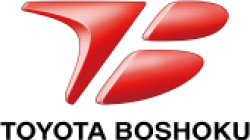 Nick Flannery
Nick FlannerySenior engineer
Toyota Boshoku America
USA
The presentation will provide an overview of TBA's vision for future mobility, encompassing its current products and capabilities and highlighting its focus on creating accessible and inclusive mobility.
1.15pm - 2.15pm
Lunch
2.15pm
The evolution of smart cockpits in automotive interiors
 Lori Mavis
Lori MavisAssociate director of product management
Publicis Sapient
USA
Join us for an exhilarating journey through the evolution of smart cockpit technology in the automotive industry. This session dives deep into the pioneering features from the 1970s to the 1990s, the advent of early infotainment and Bluetooth connectivity in the 2000s, and the groundbreaking integration of smartphones with Android Auto and Apple CarPlay. Learn how safety sensors like blind spot detection and lane keep assist have enhanced driver safety, and explore the dawn of EV and autonomous vehicle technology, which is transforming the automotive landscape. Finally, get an exclusive look at the cutting-edge trends shaping the smart cockpits of today and tomorrow. Don't miss this opportunity to explore the future of automotive innovation!
2.35pm
Leveraging automotive interior surfaces for an intuitive user experience
 Maggie Kasper
Maggie KasperAdvanced sales manager
Faurecia Interior Systems
USA
The cockpit, like the automotive industry, is experiencing a transformative revamp as consumers find that HMI via display is not as intuitive or functional as anticipated. Forvia's focus is on harnessing the power of smart surfaces to redefine interior environments and ultimately provide experiences that matter to people. By integrating advanced surface technologies, Forvia aims to create dynamic, intuitive spaces that adapt to users' needs in real time. This approach combines innovative surface activation while honoring the commitment to sustainability, offering interior lighting, integrated HMI and thermal surfaces.
2.55pm
ADAS and UX-driven semiconductor advances and AI in automotive
 Nishatha Nagarajan
Nishatha NagarajanTechnical specialist - semiconductor engineering
JLR
USA
Semiconductors have been the key components of new age technology since the 1960s. The last decade contributed a significant
acceleration to this area and the Covid-19 pandemic added a new dimension in how these key components are being viewed as the automotive industry felt the effects of chip shortages.
This is only one of the driving factors for change in semiconductor strategy.
With major automotive architecture changes like the software-defined vehicle (SDV) which focuses on centralized supercomputers, the need for an increase in chip
performance is unprecedented. Other factors that contribute to performance needs are autonomy of vehicles and user experience.
The key technology attribute is advancements in AI which are compute hungry and the deployment of these networks on edge devices has become a critical challenge.
The number of parameters trained in AI have exponentially increased with generative AI going up to 1 trillion for some networks.
The trend is only going to continue, and the industry will have to come together to address these challenges collectively.
What the audience will learn
- Shift in vehicle architecture towards more centralized architectures
- Evolution in AI and how AI driven technology is playing a key role in vehicle autonomy
- Automotive industry is adapting to these technologies to provide customers the comfort, convenience, and safety as part of their designs
3.15pm
The future of automotive seating comfort
 Brian Dunt
Brian DuntTechnical account manager
Leggett & Platt Automotive
USA
In this session, Leggett and Platt Automotive will share its vision for the next generation of automotive seating comfort. Dunt will discuss why he believes in such a technologically advanced future and how to solve unique challenges with concrete examples. Learn how comfort will evolve, the latest innovations in massage, vibration and well-being functions, how to enhance the driving experience, and how to apply these designs across all car ranges.
3.35pm
Next-gen interiors: TactoTek’s IMSE revolution in design and sustainability
 Thomas Lipscomb
Thomas LipscombVice president
TactoTek
USA
The presentation will showcase how IMSE (injection molded structural electronics) transforms automotive interiors. Explore how IMSE integrates materials, electronics, mechanics and lighting into a unified structure, enhancing design flexibility, performance and sustainability. This presentation highlights TactoTek’s unique business model, which leverages strategic partnerships to scale and deploy these advanced solutions, driving innovation in automotive interiors with a focus on eco-friendly, integrated designs. Discover how IMSE is setting new standards for efficiency and sustainability in interiors applications.
What the audience will learn
- Discover how TactoTek's IMSE® technology combines electronics, mechanics, and lighting into single-piece structures for seamless automotive interiors
- Learn how IMSE® enhances design flexibility, performance, and sustainability
- Explore TactoTek’s unique business model and strategic partnerships
On the show floor
- Innovation Showcases: Special short sessions or showcases will highlight innovative concepts, prototypes, and future trends in automotive interiors. These sessions offer a glimpse into emerging technologies and design concepts that could shape the future of automotive interiors.
Innovation Showcase — Program
Day 1: Tuesday, October 22
Show Floor Tuesday, October 22 - morning session
Moderator
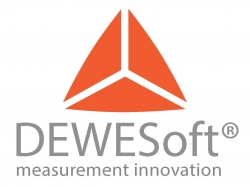 Mike Davis
Mike DavisDirector - Central
DEWESoft LLC
USA
10am
Scenario recreation, variations and simulation for testing ADAS
 Matthew Van Gennip
Matthew Van GennipResearch engineer
Global Center for Automotive Performance Simulation
Canada
The presentation will address scenario recreation, variations and simulation for testing ADAS in the vast range of potential scenarios encountered on the road. Using the Virginia Tech Transportation Institute's extensive naturalistic driving data, GCAPS is able to create realistic scenarios for simulation testing and produce simulation-ready datasets for AADS testing. The variations enable the domain coverage for more robust development and/or validation using HIL, SIL or MIL.
What the audience will learn
- Virtual test case recreation
- Concrete scenario variations (expanding test cases)
- Virginia Tech Transportation Institute's extensive naturalistic driving data
- ADAS testing
- Hardware-in-the-loop testing
10.20am
Analyzing vibration data from electric and hybrid vehicle powertrain components
 Tom Achatz
Tom AchatzProduct development and validation consultant
Vibration Research
USA
Powertrain systems for electric and hybrid vehicles have different power generation and distribution systems from conventional internal combustion engine (ICE) vehicles. Vibration test engineers must consider these dissimilarities when performing full-scale or component testing, even when working from a test standard. Data from a Cadillac Lyric was measured in the field and analyzed alongside data from an ICE vehicle with comparable weight distribution. In this presentation, we will compare measurements from both vehicle types to build conclusions about EV and hybrid powertrain systems and demonstrate building a vibration test profile with these conclusions in mind.
What the audience will learn
- Electric powertrain systems display unique vibration characteristics in the field
- Test standards recommend building vibration test profiles with measured data
- Software demonstration of accelerated life testing using measured data
10.40am
SDV electrical architecture and challenges to testing and fleet logging
 Colt Correa
Colt CorreaCOO and VP
Intrepid Control Systems
USA
This presentation will provide an overview of changes to electrical architectures in support of software defined vehicles and the new challenges these changes will pose for testing and validation. Details about the reasons why there is a shift toward automotive Ethernet in zonal architectures and away from more legacy networks like CAN and FlexRay in domain architectures will also be given, as well as new testing techniques that will be required to support these industry trends.
What the audience will learn
- Overview of the changes to electrical architecture from domain to zonal
- Why zonal architecture is best suited for software defined vehicle (SDV) functionality
- What challenges the new SDV architecture presents for testing and validation compared with legacy domain architectures
- Solutions to the above challenges
11am
Measure and map electric powertrains accurately, rapidly and safely
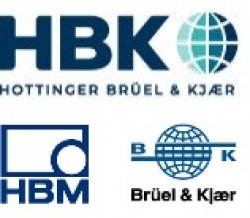 Mike Hoyer
Mike HoyerApplications engineer
HBK Inc.
USA
Learn how to mitigate electromagnetic interference (EMI), map torque ripple (mechanical noise), measure harmonics (electrical noise), improve accuracy, achieve uncompromised safety and rapidly calculate and map measurement uncertainty (MU) for every setpoint in your electric powertrain measurements using a futureproof testing solution.
What the audience will learn
- How to greatly improve accuracy and safety in powertrain measurements
- How to mitigate EMI issues in powertrain measurements
- How to rapidly calculate and map measurement uncertainty for every setup in powertrain measurements
- How to map torque ripple (mechanical noise) in powertrain measurements
- How to measure harmonics (electrical noise) in powertrain measurements
11.20am
Modernizing control software testing of electric powertrain components
 Petar Gartner
Petar GartnerDirector of HIL solutions
Typhoon HIL
USA
This presentation will talk about the change in testing requirements that transportation electrification brings along with it. The transition from a hardware-defined vehicle to a software-defined one is taking place. Instead of internal combustion engines, which lose performance over time, the modern electric vehicle is based on agile development and continues to improve performance and functionality during operational product maintenance. Increased and improved HIL testing of these components spans beyond the safety criticality standards and offers the opportunity to streamline improvements and enable a safe and ever-improving over-the-air update-based vehicle.
What the audience will learn
- Standardizing the tools for all powertrain component control software
- Improving efficiency of software teams by increasing collaboration
- Ease of use of HIL platform for testing e-drives/e-axles
- Testing onboard chargers, BMS systems, and their integration efficiently
11.40am
Advancing hydrogen safety: Mensor's precision solutions for critical leak testing
 Aaron Rayner
Aaron RaynerDirector of marketing
Mensor
USA
 Derek Zarate
Derek ZarateProduct manager
Mensor
USA
 Marshall Andrews
Marshall AndrewsSales application specialist
Mensor
USA
Leak testing for hydrogen applications is crucial in the automotive industry as hydrogen fuel cell vehicles gain popularity. The high safety risks associated with hydrogen gas necessitate rigorous leak detection in fuel cell production. The industry faces unique challenges, as different components require specific testing methods, often beyond traditional air-based techniques. As fuel cell stacks grow in size and complexity, more advanced and sensitive leak detection solutions are needed. Mensor's high-accuracy pressure control and calibration products are well suited to meet these demanding requirements. The precision instruments provide the necessary sensitivity for testing.
What the audience will learn
- Importance of leak testing
- Safety concerns in the auto industry
- Component-specific challenges
- Limitations of traditional methods
- Mensor's role and solutions
12pm
Changing the game – how cross-platform synergy reduces costs
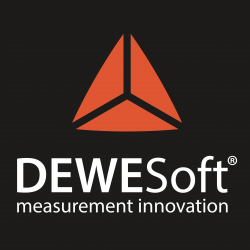 David Gallop
David GallopDirector of training services
Dewesoft
USA
Measurement technology has always been driven by specific companies’ visions, primarily driven by their perception of market needs and feedback. The best approach is to offer technological solutions that can cater for a multitude of use cases and ultimately simplify, while expanding usability but without losing sight of the primary objective – make it better, faster, more flexible and ultimately something that can reduce costs. A recent innovation you may have heard of is OpenDAQ. This technology brings an SDK that offers interoperability between a multitude of very different devices and ultimately adds coherence to a seemingly complex environment.
What the audience will learn
- How measurement has been a complex activity in the past
- Why there is a need for a more integrated approach
- How this new approach will reduce that complexity
- How this can reduce costs and streamline processes
- Why the future should look like this
12.20pm
Performing TDR with a mixed-signal oscilloscope to troubleshoot automotive
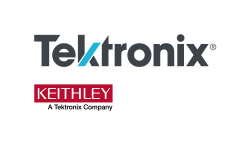 Cameron Lowe
Cameron LoweField applications engineer
Tektronix
USA
Time domain reflectometry (TDR) has been used for decades to find impedance mismatches in cables, connectors and PCB traces. Traditionally, however, TDR has only been performed using sample oscilloscopes or vector network analyzers (VNAs). By using a fast pulse generator and a mixed-signal oscilloscope (MSO), engineers can reduce the amount of test equipment needed to perform the complex task of validating an automotive ethernet link’s stability.
What the audience will learn
- A review of TDR fundamentals
- How Tektronix and Picotest are enabling TDR with MSOs
- How faulty automotive ethernet cables can be analyzed using TDR
- Practical examples will be shared throughout
Show Floor Tuesday, October 22 - afternoon session
Moderator
 Mike Hoyer
Mike HoyerApplications engineer
HBK Inc.
USA
1.10pm
Reduce energy usage by +35% using hybrid HPU technology
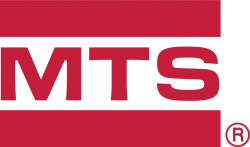 Jim Hennen
Jim HennenMarket and business development manager
MTS Systems
USA
The need to maximize energy efficiency and comply with regional and global decarbonization mandates poses daunting challenges for test laboratory managers. In response, MTS has engineered a new, hybrid approach to hydraulic power generation that employs state-of-the-art digital displacement (radial flow) technology to modulate flow during typical demand, while engaging conventional swash plate (axial flow) technology to achieve maximum efficiency during peak use. This presentation examines the benefits of this new hybrid power generation technology, presents data that demonstrates its effectiveness and explores the numerous ways it will be integrated throughout existing test laboratory infrastructure to dramatically reduce energy usage.
What the audience will learn
- A hybrid approach to hydraulic power generation
- Data supporting hybrid HPU energy efficiency claims
- How hybrid HPU technology can enhance existing infrastructure
1.30pm
The platform for connecting machines to the cloud
 Lance Keen
Lance KeenCEO
Influx Technology
UK
For more than 25 years, Influx Technology has redefined the boundaries of vehicle development and data analysis. This presentation examines how the field continues to evolve and expand. Today's dataloggers are AI and IoT enabled, yet comprehensive vehicle data is still only available in R&D, while the demand for connected vehicles soars. With the era of the software defined vehicle upon us, what innovative opportunities lie ahead to bridge the gap, and what is the solution for auto makers to seamlessly process their data on the edge, and connect vehicles to the cloud?
What the audience will learn
- History of R&D datalogging from CANbus to AI
- Problems and opportunities in this rapidly changing market
- The future of software defined vehicles
- How our digital platform will transform vehicle connectivity
- McLaren case study: data attestation secured by blockchain
1.50pm
The lifecycle of high-value sensor data
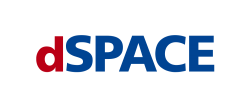 Jacob Perrin
Jacob PerrinSolution specialist
dSPACE
USA
Automated vehicles generate and often store enormous amounts of sensor data. Only some portions of the recorded data are useful for the development and validation of perception or other features. In this talk, we will look at the lifecycle of the highest-value data snippets, from point of origin to end of utility, and some of the hardships endured along the way.
What the audience will learn
- Gain insights into critical stages of the sensor data lifecycle
- Understand the challenges of maintaining a large data lake
- Best practices for optimizing quality, reliability and efficiency of data
- Learn about emerging trends shaping the future of recording management
2.10pm
V2G: how it will revolutionize the way we use EVs
 James Duffy
James DuffyBusiness development manager
Keysight
USA
V2G has the potential to revolutionize the way we use electric vehicles as DERs with our power grid. However, it is still in its early stages. This session will dive deeply into this emerging technology and share the major implications, value and incredible benefits it will provide for the future of EVs with our changing power grid architecture.
What the audience will learn
- Changing grid architecture
- EVs' role as DERs
- Balancing the grid with V2G-enabled EV/EVSE
- V2G compliance standards
- Overcoming test challenges for V2G and DERs
2.30pm
openDAQ – the future of DAQ systems
 Nils Roettger
Nils RoettgerCTO
openDAQ d.o.o.
Slovenia
Over the past two years, the openDAQ Software Development Kit (SDK) has undergone substantial advancement, evolving from concept to actualization. openDAQ release 3.10.0 signifies the culmination of this development effort, with all key features fully developed and refined. This enables seamless integration of test and measurement products into a solution via the unified application programming interface for discovery, streaming and configuration. Notably, openDAQ embraces well-accepted industry standards for achieving this. This advancement is poised to significantly streamline our professional life. How it works, who is already engaged and how you can get engaged are explained in this presentation.
What the audience will learn
- What the openDAQ Software Development Kit is
- Hows the openDAQ SDK enable test and measurement
- The standards which are supported by the openDAQ Software Development Kit
- Which devices talk openDAQ right now
- How you can engange with the openDAQ initiative
2.50pm
Sound quality and fluctuation sound analysis for improving EV comfort
 Masaru Okoshi
Masaru OkoshiOverseas sales section leader
Ono Sokki
USA
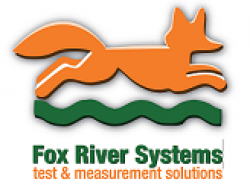 Mike Gilley
Mike GilleyOwner
Fox River Systems
USA
Passenger cabin sounds have been the focus of NVH and BSR analysis in the automotive industry for years, particularly engine, booming and road noise in internal combustion engine vehicles. However, the shift to electric vehicles (EVs) has changed these targets. Engine and booming noises are now less relevant, while road noise is more prominent in EVs. Additionally, EVs introduce new noise sources, such as inverters and motor electromagnetic noise. Therefore, NVH measurement targets must adapt to these challenges. This presentation will discuss sound quality and fluctuation sound analysis as tools for enhancing ride and sound comfort in modern vehicles.
What the audience will learn
- Evolution of NVH targets in EV versus ICE vehicles
- Evaluating EV comfort using sound and vibration measurement techniques
- Sound quality metrics relevant to EV cabin sound field
- Fluctuation sound analysis providing visualization of time-fluctuating sense of sound
- Potential requirements for future EV cabin sound
3.10pm
Introduction to the micromobility device thermoelectric dynamometer
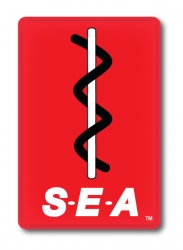 Dr Scott Zagorski
Dr Scott ZagorskiResearch engineer
SEA
USA
SEA's latest product is a micromobility device thermo-electric dynamometer. This machine can evaluate mechanical and electrical properties of micromobility devices such as hoverboards, bikes, scooters, Segways, skateboards, unicycles and ATVs in a laboratory setting. Variable load amounts can be applied to simulate rider presence and road load resistance to represent real-world conditions. The machine also has the ability to measure battery temperatures, voltages and currents. This machine eliminates the need for a test subject or test pad, which allows for controlled, safe and repeatable analysis of micromobility devices under a wide range of testing conditions.
What the audience will learn
- Micromobility Device Thermo-Electric Dynamometer
- Laboratory facility for conducting representative real-world tests for micromobility
- Testing facility for evaluating hoverboard, scooters, bikes, unicycles, ATVs,
- Automated way of applying vertical load and road load
- Test facility for evaluating battery life characteristics under real-world
Day 3: Thursday, October 24
Show Floor Thursday, October 24 - morning session
10am
MCU/TCU integration bench test for electrified Class-8 heavy-duty truck CANCELLED
 Dr Yongpeng Zhang
Dr Yongpeng ZhangManager of e-drive system engineering
Hyzon Motors
USA
Hyzon Motors is a Nasdaq-listed startup company focusing on hydrogen fuel cell development and related electrified powertrain engineering. In its second-generation 200kw fuel cell-based powertrain, the traction motor and gearbox assembly are provided by one supplier, and the motor controller unit is integrated into a 5-in-1 power distribution unit provided by another supplier. Hyzon will share with the audience how to organize and manage the bench test involving two individual suppliers and wrap up all the testing within a month.
What the audience will learn
- Electrified vehicles
- Class-8 heavy-duty trucks
- Hydrogen fuel cells
- MCU/TCU integration
- Bench tests
10.20am
Boundary testing electric vehicle supply equipment (EVSE)
 Jonathan McCallie
Jonathan McCallieATE sales director
Chroma
USA
Electric vehicle charging station manufacturers face a number of challenges, including connectivity issues, component problems and incompatibility. In this presentation, you will learn how to ensure EVSE product reliability and operability is at its optimum before field issues arise. For example, how to control the EVSE to output multiple connectors at the same time based on specified test conditions, and simulate plugging in at different times to test the equipment’s power-sharing capabilities. This test scenario provides realism and, compared with conventional single-coupler testing, reduces the overall testing time by up to 40%, significantly expanding test capacity.
What the audience will learn
- Testing EV charging processes and safety mechanisms
- EVSE product reliability and operability
- Power sharing or load management testing
10.40am
Vehicle cybersecurity: shifting left with HIL- and SIL-based cybersecurity testing
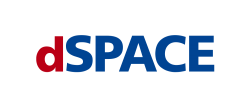 Dr Matthias Pukrop
Dr Matthias PukropProduct engineer
dSPACE GmbH
Germany
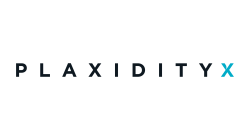 Jason Cole
Jason ColeSales director
PlaxidityX (formerly Argus Cyber Security)
USA
Vehicle penetration testing is essential to the type approval regulatory requirement and is crucial in uncovering security vulnerabilities in vehicles. However, navigating the resolution process can be time-consuming, with potential business impacts such as a delay in the start of production date. This presentation will explore a strategic approach to managing this process and mitigating risks by shifting left, harnessing hardware-in-the-loop and software-in-the-loop test platforms for automated cybersecurity testing in the development stages. It will also discuss how this proactive methodology identifies issues early and streamlines the finalization stages, ensuring your product’s security is comprehensively validated.
What the audience will learn
- How HIL and SIL test systems allow automated cybersecurity testing
- The pivotal role of penetration testing in meeting automotive cybersecurity regulations
- Frontloading V&V activities by conducting SIL- and HIL-based cybersecurity tests
11am
Revolutionizing automotive testing with QTec technology
 Osama Jameel
Osama JameelTeam lead - central region
Polytec
USA
In the ever-evolving automotive industry, innovation is key to staying competitive. The highly innovative, patented QTec technology stands at the forefront of this revolution, offering groundbreaking advances in vibrometry. This presentation delves into the transformative impact of QTec technology on automotive manufacturing and testing processes. By leveraging QTec's superior measurement accuracy and non-contact capabilities, automotive engineers can achieve unparalleled insights into vehicle dynamics, structural integrity and component performance. This leads to enhanced product quality, reduced development cycles and significant cost savings.
Attendees will explore the core principles of QTec technology, its applications in various automotive scenarios and real-world case studies.
What the audience will learn
- Explore core principles of QTec technology
- How QTec is driving the future of automotive innovation
- Ensuring vehicles are not only high-performing, but also safe and reliable
- Real-world case studies demonstrating QTec's efficacy
- Various applications in the automotive industry
11.20am
Pressure sensors for testing in hydrogen environments
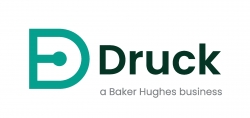 Stephen Sajben
Stephen SajbenSenior product specialist
Druck, a Baker Hughes company
USA
In the continuing efforts to improve fuel cell technology for use in fuel cell electric vehicles, testing requirements continue to grow and expand. Hydrogen, while an efficient, clean and renewable energy source, can present unique challenges for instrumentation used in testing. This talk will attempt to define those issues specific to pressure measurement requirements, particularly related to hydrogen embrittlement and permeation of materials used in pressure sensors. Additionally, a potential solution to address these challenges and the related benefits will be presented.
What the audience will learn
- Growing testing requirements of fuel cell for use in FCEVs
- Issues around hydrogen embrittlement
- Issues relating to hydrogen permeation
- How these challenges can be addressed in pressure sensors
- The benefits of proper selection of pressure sensors for testing
11.40am
Thermal manikin with new JOS-3 control software
 Koji Miyasaka
Koji MiyasakaGeneral manager
Kanomax USA, Inc.
USA
The thermal manikin is a well-established tool for evaluating thermal comfort and HVAC efficiency in automotive, ref. ISO 14505-2. The PT Teknik thermal manikin is dedicated to automotive and used by OEMs and subcontractors around the world. JOS-3 is a new thermophysiological model developed by the Tanabe Lab, Waseda University in Japan. The model has several improvements over older thermoregulatory models, including differentiation between age groups. It is an open-source tool, available for researchers to do experimental testing.
What the audience will learn
- Passenger comfort applications for automotive vehicles
- The thermal manikin as a solution for thermal comfort evaluation
- New JOS-3 thermophysiological model
12pm
Dynamic measurements in minutes instead of hours/days utilizing motion amplification
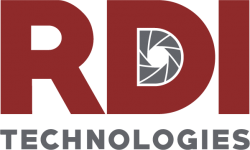 Sean Hollands
Sean HollandsChief commercialization officer
RDI Technologies
USA
Utilizing the patented motion amplification technique, RDI Technologies will show how it is revolutionizing dynamic measurements. Data that was acquired in minutes will be shared, showing wind tunnel body dynamics; the ODS response of a car suspension and body panel vibration; a printed circuit board failure analysis; a rotational dynamics example, measuring car interior panel responses to find a noise source; thermal growth; engine mount dynamics; steering wheel shake; idle exhaust vibration dynamics; torsional modulation of the brake caliper; brake disk modal response; and a torsional shaft measurement.
What the audience will learn
- What is motion amplification?
- How you can apply this technology to find asset faults
- How to quickly find the root cause of the faults
- How visual reporting to leadership changes outcomes
- How to increase the safety of your team
Partner with us
- Brand visibility: Sponsoring the conference provides companies with prominent branding opportunities, including logo placement on promotional materials, signage, and digital platforms.
- Thought leadership: Sponsoring organizations can position themselves as thought leaders within the automotive interior design and technology space by participating in panel discussions, delivering keynote presentations, and sharing insights on emerging trends, innovations, and best practices.
- Product Showcase: Sponsoring organizations can showcase their products, technologies, and solutions to a captive audience of industry professionals.
- Networking Opportunities: The conference offers a platform for sponsors to network with key stakeholders, including automotive OEMs, suppliers, designers, engineers, and industry experts. Networking events, receptions, and visitor relaxation areas facilitate meaningful interactions and relationship-building opportunities.



